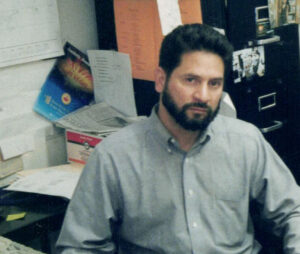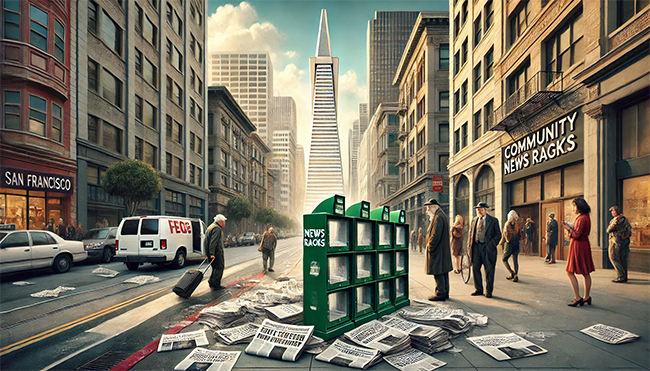“New Mayor Daniel Lurie must act to preserve San Francisco’s community news racks”

by Marvin Ramírez
With reports by Julia Gitis
San Francisco, renowned for its progressive values, now faces criticism for a decision that undermines its diverse communities: the removal of city-managed news racks. This move threatens to silence independent media, which amplify marginalized voices. For a city that prides itself on inclusivity and free expression, this decision feels both contradictory and disheartening.
Community newspapers like El Reportero are cultural lifelines. They highlight stories overlooked by mainstream media, promote literacy, and preserve languages and traditions. Yet instead of supporting these vital outlets, the city appears intent on erasing them. The disappearance of green news racks, once fixtures of San Francisco’s streets, reflects a broader issue: the marginalization of independent media in favor of digital platforms controlled by corporate giants.
Take Ken Cacich, a 72-year-old Lower Polk resident. For decades, he relied on print newspapers like the Bay Area Reporter for news. “One by one, they’re disappearing,” he says. For seniors like him and non-English speakers who prefer print over digital formats, these racks were gateways to community connection. Their removal feels like a betrayal of those without the means—or desire—to go online.
The irony is stark. In the 1990s, San Francisco centralized individual news boxes into city-owned green racks, addressing concerns about clutter while maintaining equitable access to publications. These kiosks became hubs for discovering local gems like El Tecolote, The Potrero View, and The Sunset Beacon. But as print journalism faced decline, the city shifted priorities, dismissing these racks as “blight.”
Maintaining individual racks is prohibitively expensive for small publishers. Replacement costs run into hundreds of dollars, and the city mandates $1 million in liability insurance—unaffordable for outlets already struggling financially. Even publishers who comply face vandalism or rack removal without notice. As the publisher of El Reportero, I’ve spent thousands of dollars on racks, only to see them vanish inexplicably. It often feels like an intentional effort to suppress independent voices.
The Department of Public Works claims racks are removed after repeated warnings about graffiti. However, warnings that once arrived via email have disappeared, leaving publishers uninformed. Paul Kozakiewicz of the Richmond Review and Steven Moss of The Potrero View recount similar experiences, with racks removed and fines for graffiti exceeding any revenue generated. These challenges have forced many to abandon street racks altogether.
For print readers, this loss is keenly felt. Cacich, for example, prefers newspapers over screens. “I’m old-fashioned,” he says. “I like a newspaper on the treadmill.” Fadi Berbery, owner of Smoke Signals, a Polk Street shop, confirms that print retains strong demand across all ages. Younger readers also value the tactile experience of flipping through pages.
San Francisco’s removal of news racks reflects a broader trend prioritizing digital media while neglecting less tech-savvy residents. Distributing papers through local businesses is an imperfect solution; newspapers tucked away in cafes or bookstores lack the visibility of street racks. Jason Feng, who runs a newsstand in North Beach, emphasizes the importance of accessibility, noting that many rely on his stand daily.
This is more than a logistical issue; it’s a cultural one. News racks once offered serendipitous encounters with stories readers might never seek online. They symbolized free speech and community engagement. Their absence diminishes the urban landscape and narrows the avenues for diverse perspectives to reach the public.
As San Francisco nears the final removal of city-run racks, I urge newly inaugurated Mayor Daniel Lurie to reverse this damaging policy. The city should support independent media by subsidizing rack costs, streamlining permits, or reinstating centralized kiosks. Additionally, publishers should be allowed to own and maintain their racks on sidewalks without fear of arbitrary removal. Community newspapers are not relics of the past—they are vital threads in the fabric of our society, especially for new generations. Losing them means losing a part of ourselves.
The decline of print journalism is complex, but San Francisco—a city celebrated for innovation and equity—can find solutions. Investing in local media affirms a commitment to free expression and ensures all voices, not just the powerful, are heard. Preserving news racks is about more than tradition; it’s about protecting the democratic ideals that define us.
And, finally, it would be great to know, who gave the order for the removal?
This editorial was inspired by reporting from Julia Gitis for Mission Local.



